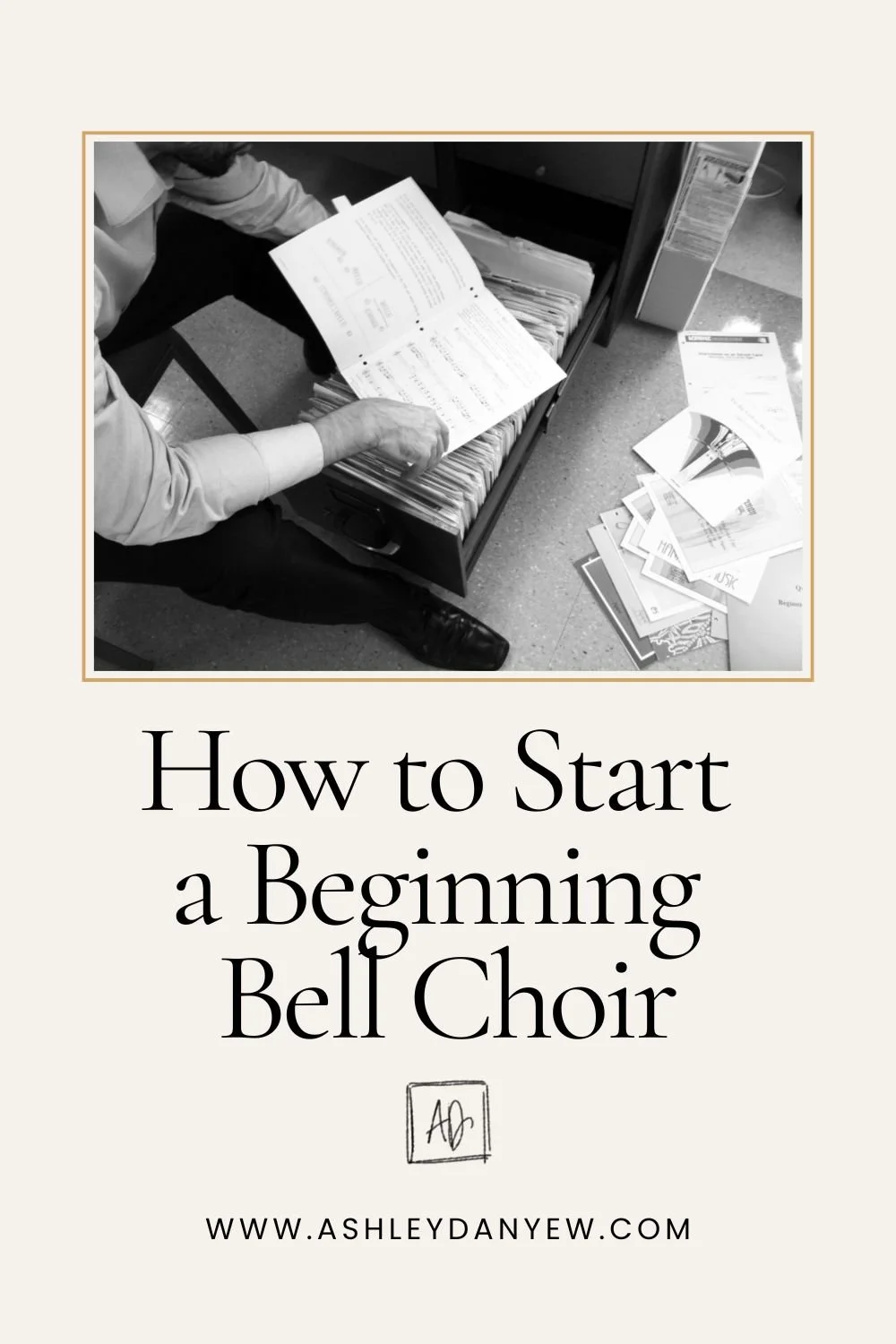*Disclosure: I get commissions for purchases made through links in this post.
We've had three rehearsals with our little bell choir now and they're doing so well! As you may recall from my last post, SD and I tried to plan a variety of music for the first few weeks — pieces that called for a flexible number of bells and covered a range of playing and reading levels.
The first night, we had several new ringers and a few that were new to reading music entirely.
(Side note: I was thrilled by this — it's so exciting to me to have new people come out to learn and make music together!).
With this scenario in the back of our minds, we also planned a few improvisation activities that wouldn't rely on music notation. This way, we could start making music right from the beginning with whoever came that first night.
Getting Started with Handbells
We distributed pencils and pairs of white gloves to everyone as they arrived and made temporary bell assignments based on the pentatonic scale. We used a C-based pentatonic scale (C-D-E-G-A) but you can easily transpose it to another key of your choice. Each person had 2 bells.
Random Ring
We introduced and demonstrated the basic techniques of ringing and damping and then let everyone try it for a minute or so, freely and in their own tempo. (This was the perfect setup for our improvisation activity because, essentially, they were already creating a "random ring" effect without even realizing it!).
Once everyone had a good feel for ringing, we started the activity formally, this time with the lowest C (C3 or C4) chiming three times to start us off. Everyone was free to ring as frequently or infrequently as they desired and since we were only using the notes of the pentatonic scale, we told them not to worry about damping for the time being.
The goal was to create a sort of "wind chime" effect that would become the backdrop for the familiar chant melody, "Of the Father's Love Begotten." The first two weeks we did this, I played the melody on the piano with plenty of space in between phrases. The third week, SD played the melody on the saxophone (the way we hope to play it in worship later this month).
Pros
The great thing about this activity is that there are no wrong notes. The pentatonic arrangement ensures that even if everyone played their bells at the same time, the resulting sonority would be a pleasant one.
There is no real sense of rhythm involved, as it is determined at the individual level, so those with lower levels of musical intuition won't feel self-conscious about not ringing in time with everyone else. Also, there is no reading involved! Those who are new readers don't have to worry about following the "third line and fourth space" while keeping track of the beat — they can just play, uninhibited.


![The Joy of Children's Handbell Choirs [Video]](https://images.squarespace-cdn.com/content/v1/585c710603596e2c47dad93e/1482458472572-UQOTZ604Q6UKSIBZVYEZ/image-asset.png)






















![Handbell Notation Guide [Infographic]](https://images.squarespace-cdn.com/content/v1/585c710603596e2c47dad93e/1491403915874-P2UH6FM8J1W1HM4UWP17/Handbell+Notation+Guide-02.png)











